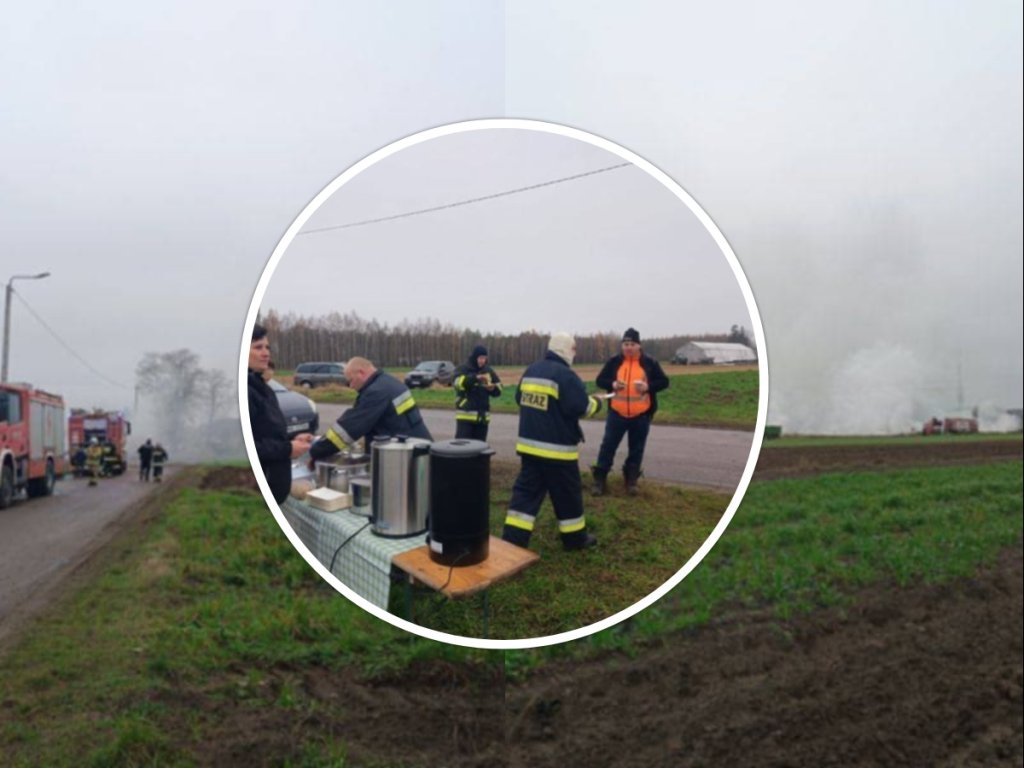- Weather now drives most big blackouts. From 2000–2023, 80% of major U.S. power outages were caused by weather; the average annual number of weather‑related outages is up ~80% since 2011, according to federal analyses. climatecentral.org
- Heat domes and compound storms keep raising the risk. NERC’s 2025 Summer Reliability Assessment warns that wide‑area heat events and heat domes remain “ongoing reliability risks.” nerc.com
- Grid upgrades are coming—but slowly. FERC’s transmission rule (Order 1920‑A) aims to plan and pay for big lines over 20‑year horizons. As Chair Willie Phillips put it, the goal is to ensure “our grid can serve the significant growth in demand.” Federal Energy Regulatory Commission
- Resilience is scaling from homes to whole communities. California utilities just tested a 535‑MW virtual power plant of home batteries, while U.S. microgrid capacity could approach 10 GW by end‑2025, driven by extreme weather and data‑center demand. pge.com
- Undergrounding lines is accelerating where fire and storms hit hardest. PG&E says its cost per mile to bury lines fell to ~$3.1M in 2025 as it surpassed 1,000 miles undergrounded; FPL continues storm‑hardening and lateral undergrounding across Florida. investor.pgecorp.com
The big picture: Why more people are losing power—and for longer
The U.S. grid was built for a 20th‑century climate. A 21st‑century reality—stronger heat waves, bigger winter storms, and wind‑driven wildfires—is now the top driver of major outages. Federal and nonprofit analyses converge on the same signal: weather causes most large blackouts, and the frequency of weather‑related outages has sharply increased since the early 2010s. climatecentral.org
Hotter summers add simultaneous stress: air‑conditioning load surges just as heat reduces output from thermal plants and transmission lines. NERC’s latest seasonal assessment flags those “wide‑area heat events and heat domes” as persistent reliability risks for summer peaks. In worst‑case scenarios, grid operators may need Energy Emergency Alerts to keep supply and demand in balance. nerc.com
Compound extremes—heat plus wind plus heavy rain—also matter. A 2025 peer‑reviewed study finds an 8+ hour outage is ~52× more likely on days with concurrent severe precipitation, unusual heat and tropical‑storm‑force winds than on benign days. Nature
Meanwhile, demand keeps climbing: electrification, manufacturing booms, and AI/data centers all push usage higher. FERC’s transmission overhaul explicitly targets this trend, with Phillips noting “much‑needed new transmission facilities… to ensure our grid can serve the significant growth in demand.” Federal Energy Regulatory Commission
Bottom line: Outages are more likely during extreme weather, and the consequences—especially during heat waves or deep freezes—are more dangerous. Preparation is no longer a luxury.
Current developments you should know
- Grid‑scale fixes
- Long‑distance transmission planning (FERC Order 1920‑A): Requires 20‑year regional planning and clearer cost‑allocation to expand/“right‑size” lines that cut outage risk and bottlenecks. Federal Energy Regulatory Commission
- Microgrids: Hospitals, airports, campuses, and neighborhoods are building energy “islands” with on‑site generation and storage that can ride through grid failures. U.S. microgrid capacity could reach ~10 GW by end‑2025, Reuters reports. Reuters
- Airport microgrids: JFK’s New Terminal One is installing a privately financed, energy‑as‑a‑service microgrid (solar + batteries + controls) to keep critical operations running without up‑front public capital. facilitiesdive.com
- Undergrounding & hardening: PG&E reports >1,000 miles of energized underground lines and a lower ~$3.1M/mile cost; FPL’s Storm Secure Underground Program continues to move vulnerable laterals below ground to reduce storm outages. investor.pgecorp.com
- Virtual Power Plants (VPPs): In a statewide test, home batteries delivered 535 MW in California—proof that aggregated devices can stabilize the grid during peaks and emergencies. pge.com
- Home & vehicle backup is maturing
- Vehicle‑to‑home (V2H): EVs are increasingly used as rolling batteries; the Ford F‑150 Lightning can supply a home for days with the right transfer equipment, and V2H pilots are expanding (e.g., BGE). The Washington Post
- Home batteries: Typical residential systems (≈10–15 kWh) now qualify for incentives in many states; the DOE/NREL 2024 ATB tracks current costs and performance for representative systems. atb.nrel.gov
- Policy & funding (watch this space): FEMA’s BRIC and state programs have supported resilience projects like microgrids and undergrounding; program scopes and funding levels are evolving amid legal and policy debates. Check FEMA BRIC guidance and active state initiatives when applying. FEMA
Your resilience playbook—for every budget
Safety first (always). Never run a portable generator indoors or in a garage; operate it outside, 20+ feet from doors and windows. Install working CO alarms on every level of your home. Keep fridge/freezer doors closed; a refrigerator keeps food safe ≈ 4 hours without power; a full freezer ≈ 48 hours. news.caloes.ca.gov
$0–$50: No‑regrets prep
- Stock flashlights/headlamps (no candles), spare batteries, a basic first‑aid kit, and phone power banks.
- Freeze water bottles to extend fridge/freezer cooling; keep a fridge thermometer to confirm safe temps.
- Save your utility’s outage map and emergency numbers; learn community cooling/warming centers. Ready.gov
$50–$300: Small gear with big impact
- UPS for modem/router + a few essentials to keep internet going.
- High‑capacity power stations (lithium iron phosphate) to run phones, laptops, a CPAP for hours; new “plug‑behind‑appliance” batteries can keep a refrigerator running for long outages without panel work. The Verge
$300–$1,500: Portable power—used safely
- Inverter generator (quiet, fuel‑efficient) sized for critical loads (fridge, lights, fans).
- Transfer switch or interlock installed by an electrician to avoid dangerous back‑feeding.
- Place generators outdoors and dry; never near windows or in partially enclosed spaces because CO can kill without warning. news.caloes.ca.gov
$1,500–$7,000: Entry‑level home battery or critical‑loads panel
- A 10–13.5 kWh battery running a critical loads panel (fridge, lights, outlets, internet, a minisplit) can cover multi‑hour outages without fumes or refueling, and may qualify for rebates/tax credits depending on your state and installation timing. See NREL ATB for current cost/performance benchmarks. atb.nrel.gov
$7,000–$20,000: Whole‑home standby generator or larger battery
- Standby generators with automatic transfer switches start in seconds and can power entire homes; installed costs typically range roughly from ~$5,000 to the low teens, sometimes more for complex sites. Installation alone can run $2,000–$20,000+ depending on gas line length, slab, and electrical work. Maintenance + fuel are ongoing costs. Home Advisor
- Bigger batteries (and a second unit) boost runtime and enable more circuits; evaluate incentives and time‑of‑use bill savings.
$20,000–$50,000+: Solar + storage or V2H integration
- Solar + multi‑battery systems can ride through extended outages (weather permitting), power medical devices, and lower bills year‑round. Your economics depend on sun, rates, and incentives. (NREL/DOE track costs; installer quotes vary.) atb.nrel.gov
- Vehicle‑to‑home (V2H): With the right hardware and transfer equipment, EVs can run homes for hours to days; utilities are piloting programs that even pay for participating as grid support. The Washington Post
$1 million–$100+ million: Community‑scale resilience
- Community microgrids (for downtowns, hospitals, emergency services) can island from the bulk grid during disasters. States and utilities are funding these (e.g., California’s $200M Microgrid Incentive Program), and airport/port microgrids are scaling via energy‑as‑a‑service finance. cpuc.ca.gov
- Undergrounding in high‑risk zones (fire, hurricanes) materially cuts outages; costs vary but are declining in some programs (e.g., PG&E ≈$3.1M/mile in 2025). investor.pgecorp.com
If someone in your home depends on electricity for health
- Get on your utility’s medical/critical‑care registry (for notices and restoration prioritization where possible) and ask about portable‑battery or generator rebates. pge.com
- Check the HHS emPOWER Map/REST Service to understand regional concentrations of electricity‑dependent Medicare beneficiaries and local planning resources. emPOWER Program
- Keep a device‑specific plan (back‑up batteries, manual options, medication refrigeration) and know the nearest powered facility you can reach safely. American Lung Association
What utilities and regulators are doing (and what that means for you)
- Seasonal risk management: NERC’s seasonal outlooks guide grid operators when to issue alerts and shed non‑firm load if needed—another reason your demand response enrollment and smart thermostat settings matter on peak days. nerc.com
- Transmission build‑out: FERC’s Order 1920‑A is meant to reduce regional bottlenecks and improve resource diversity across long distances—critical when storms are local but the grid is continental. Federal Energy Regulatory Commission
- Local hardening: Undergrounding and pole/wire replacements cut vegetation contacts and wildfire ignitions; Florida’s and California’s programs illustrate the trend, though costs and rate impacts differ by region. fpl.com
- Distributed solutions: VPPs that pay households for battery support are expanding (e.g., the California test), blurring the line between “consumer” and “capacity resource.” pge.com
A 10‑step outage‑proofing checklist
- Map your critical loads. List what must run (e.g., fridge, modem, CPAP, a room A/C or heat).
- Pick your tier. Start at your budget level above and scale over time.
- Add safety. CO alarms; generator transfer switch; surge protection. news.caloes.ca.gov
- Pre‑wire a critical‑loads subpanel. Even a future battery will work better if the panel is ready.
- Enroll in demand response. Earn money and help avoid rolling outages during peaks. ENERGY STAR
- Harden the shell. Weatherization (insulation, air sealing) reduces the power you need to stay safe. The Department of Energy’s Energy.gov
- Back up connectivity. UPS for modem/router; ensure phone banks are charged.
- Fuel plan or no‑fuel plan. If you choose a generator, store fuel safely; if not, size batteries/V2H accordingly. Consumer Reports
- Practice the switchover. Test your system (monthly for generators; seasonally for batteries).
- Know your community options. Cooling/warming centers; neighbors who can share power; local microgrid/resilience‑hub plans. pge.com
What it costs—typical ranges (not quotes)
- Portable inverter generator: usually hundreds to low thousands plus safe transfer gear. (Safety: outdoor use only.) news.caloes.ca.gov
- Home standby generator (with ATS): commonly ~$5k–low teens installed in many cases; complex installs can exceed $20k. Ongoing maintenance and fuel add to lifetime cost. Home Advisor
- Home battery (≈10–15 kWh): costs vary by brand, installer, and incentives; DOE/NREL provides technical cost benchmarks, and consumer sites track street pricing. atb.nrel.gov
Why preparing now pays off
- Health protection: During heat waves and cold snaps, power equates to safety; outages can be life‑threatening for medically vulnerable people. Ready.gov
- Food and medication: Avoid spoilage, keep meds safe, and maintain communications. Ready.gov
- Community stability: Aggregated home systems (batteries, EVs, thermostats) now help keep the lights on for everyone—because your home can be part of a virtual power plant. pge.com
Expert voices (briefly quoted)
- NERC (May 2025): “Heat domes … are ongoing reliability risks in certain areas for Summer 2025.” nerc.com
- FERC Chair Willie Phillips (Nov. 21, 2024): Order 1920‑A will help ensure the grid “can serve the significant growth in demand for electricity.” Federal Energy Regulatory Commission
- DOE Grid Deployment Office (Nov. 8, 2023): “The average annual number of weather‑related power outages has increased by almost 80% since 2011.” The Department of Energy’s Energy.gov
Quick resources
- Plan & safety: Ready.gov Power Outages hazard sheet; CDC CO‑poisoning guidance for generators. Ready.gov
- What to do with food: USDA/FDA food‑safety during outages (fridge ≈ 4 hours; full freezer ≈ 48 hours). ESFI
- Medical dependence: HHS emPOWER tools; check your utility’s Medical Baseline/Critical Care program and portable‑battery support. emPOWER Program
- Programs & funding: State utility rebates, FEMA BRIC for community mitigation, California Microgrid Incentive Program; VPP enrollment with your utility or battery/EV provider. FEMA
The takeaway
Extreme weather is causing more outages—and the risks are rising—but you don’t have to be left in the dark. Whether you start with a $30 headlamp and a plan, a $900 power station, or a fully‑wired solar‑plus‑storage system, every step reduces your vulnerability. At the community level, microgrids, undergrounding, and transmission build‑outs are scaling to meet a tougher climate. Preparation isn’t a luxury—it’s a necessity. Reuters

 1 dzień temu
1 dzień temu















